Is Indian Railways Profitable? The Truth Behind the Numbers
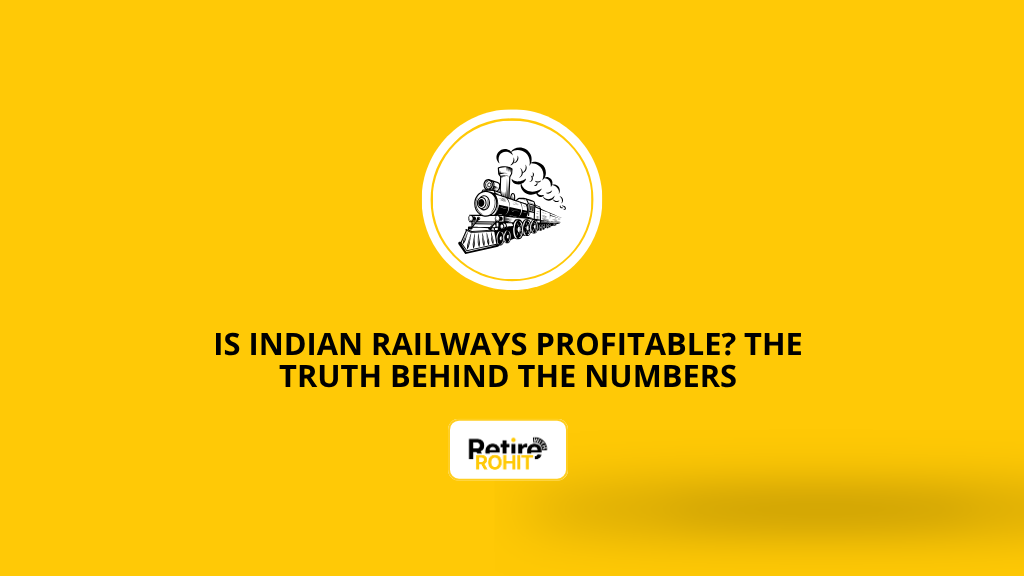
In a country as vast and diverse as India, railways are more than just a transport system, they are lifelines. Operated by the Government of India, Indian Railways is one of the world’s largest and most complex rail networks. Every day, over 23 million passengers and 3 million tonnes of freight move across these tracks. But behind this massive scale lies an important question i.e. Is Indian Railways Profitable?
It touches nearly each and every Indian’s life. But running such a massive system isn’t cheap as it involves huge costs in fuel, maintenance, salaries and infrastructure. At first glance, it might seem like Indian Railways is a profit-making giant after all, it earned ₹2.65 lakh crore in FY24 and posted a surplus of ₹2,393 crore. But dig deeper, and the picture changes.
Let’s dive deep into this question through facts, figures, policies, and economics.
Financial Outlook
| Metric | FY 2023-24 | FY 2024-25 |
| Total Revenue | ₹2.56 lakh crore | ₹2.65 lakh crore |
| Total Expenditure | ₹2.52 lakh crore | ₹2.63 lakh crore |
| Net Revenue | ₹3,260 crore | ₹2,342 crore |
| Operating Ratio | ₹98.45% | ₹98.32% |
- Indian Railways made a small profit in both the years.
- In 2024-25, it earned more but also spent more, so profit stayed almost the same.
- The Operating Ratio i.e. 98.9% means Railways spends ₹98.9 to earn ₹100 which states that very little is left as profit.
- It’s not in loss, but it’s just managing to stay in profit.
Revenue Model
| Sources | FY25 Earnings | FY26 Estimates |
| Freight | ₹1.71 Lakh Crore | ₹1.88 Lakh Crore |
| Passenger | ₹75,239 Crore | ₹92,800 Crore |
| AC 3-Tier | ₹30,088 crore (part of passenger) | ₹37,115 Crore |
| Non-Fare (Sundry) | ₹11,562 Crore | ₹20,600 Crore |
Freight (Main Source of Money)
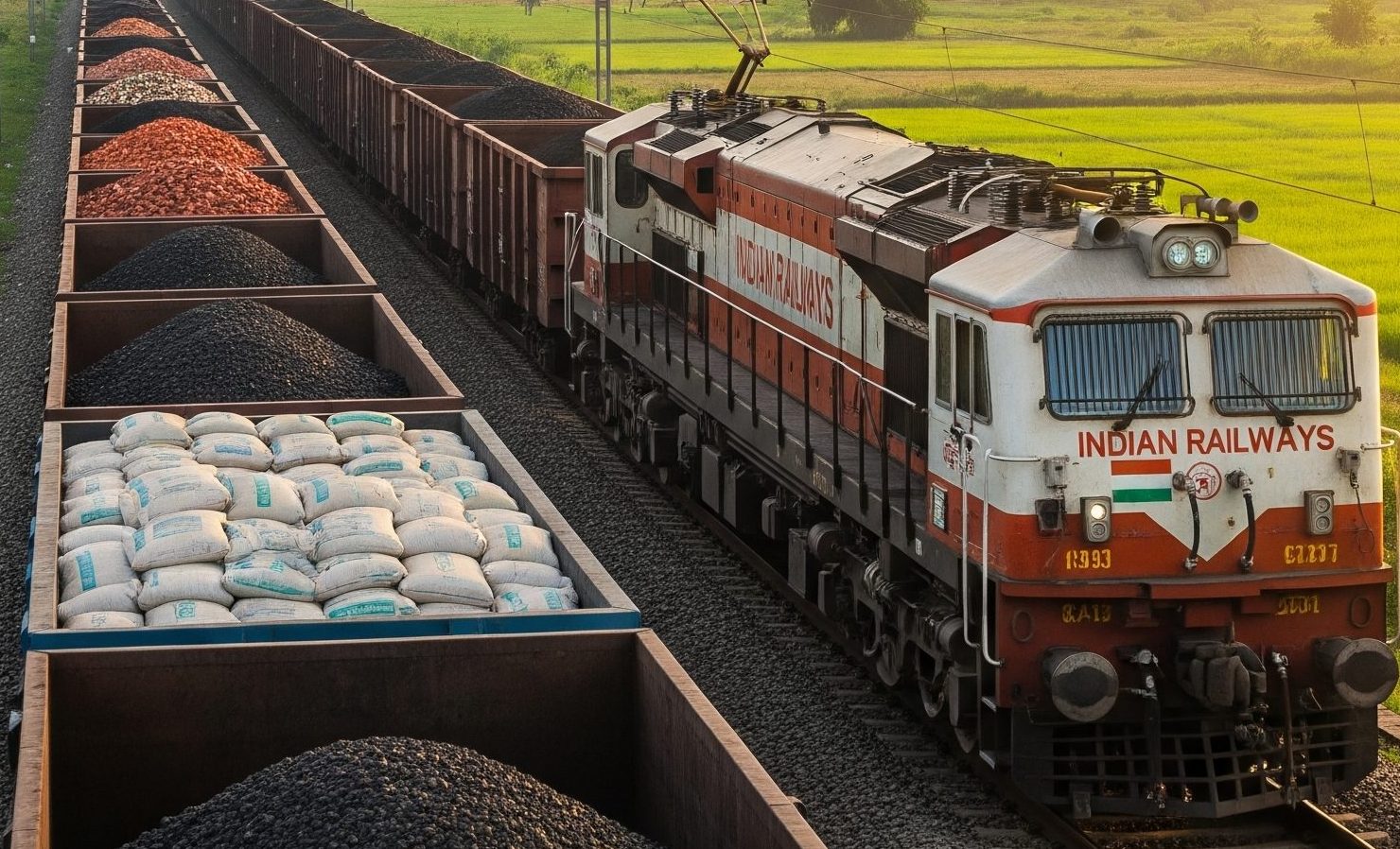
Image generated from Google Gemini
- Railways earn the most from the goods transportation like coal, cement, iron ore.
- In FY25, they moved 1.61 billion tonnes of goods and only China did more than this.
- Coal alone gives over 50% of freight income.
- New policies like better terminals, private wagons and discounts on short trips are helping boost freight earnings.
Passenger Services (High Use But Low Profit)
- Trains do carry millions of people but ticket prices are low due to government policy.
- Coaching (passenger) OR stood at ~180.82% in 2022–23 i.e., IR spent ₹180.82 to earn ₹100 from passenger fares
- So, this part often runs in loss but AC class travel is increasing and
- AC 3-Tier brought in ₹30,088 crore in FY25.
- It is expected to grow by 40% in FY26.
- New premium trains like Vande Bharat are helping raise revenue per passenger.
Non-Fare Income (Small but Rising)
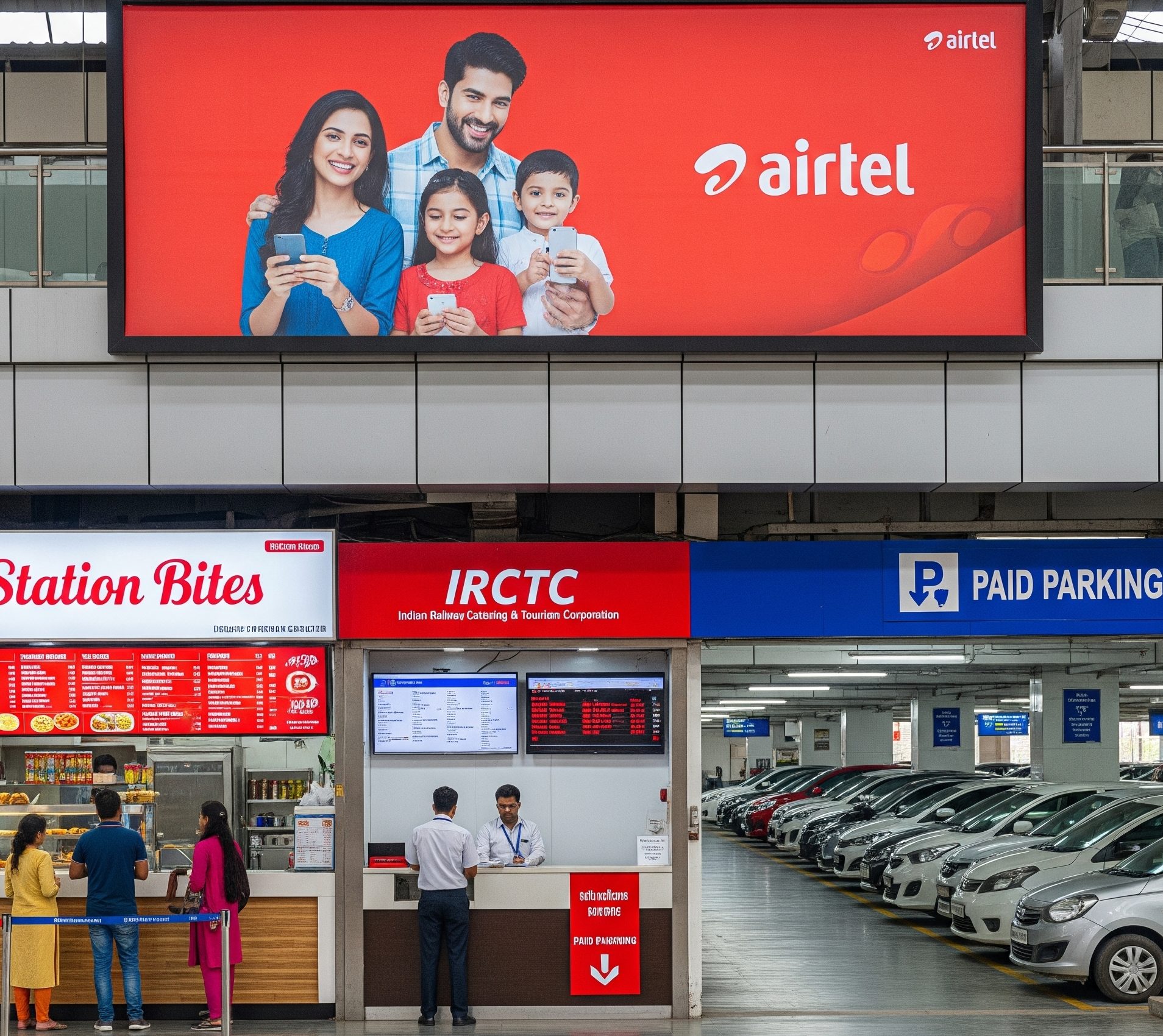
Image generated from Google Gemini
- This includes money earned from ads at stations, parking lots, renting spaces, IRCTC services and food sales.
- In FY25, this earned ₹11,562 crore and it’s expected to nearly double in FY26.
- Indian Railways is also trying to earn more by leasing land and station spaces under the NINFRIS policy.
Subsidies in Indian Railways
Indian Railways provides low-cost travel to millions. But behind these affordable fares lies a massive subsidy burden that affects its profitability.
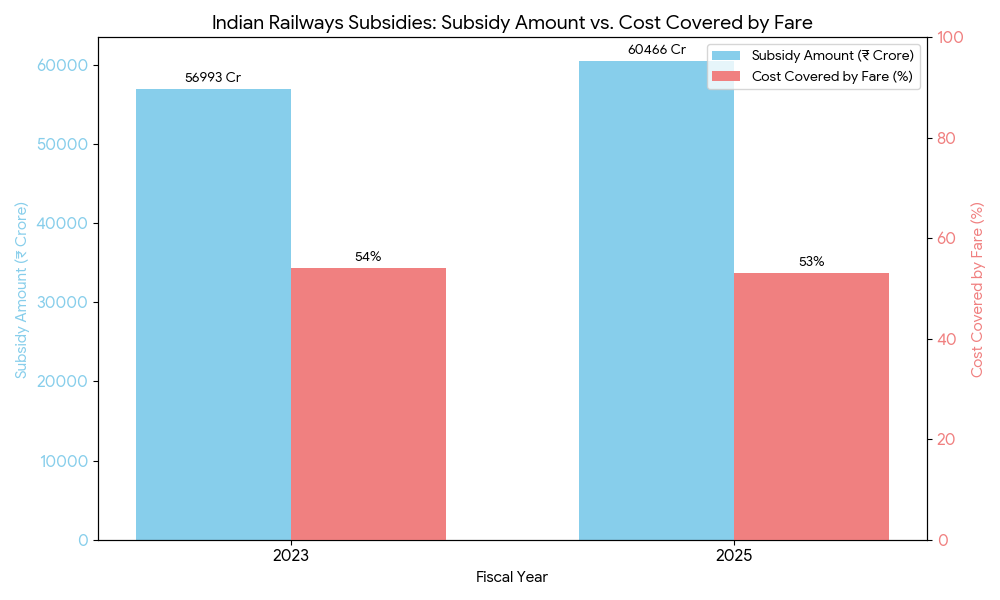
Image generated from Google Gemini
| Year | Subsidy amt. | Cost Covered by Fare |
| FY23 | ₹56,993 Crore | 54% (46% subsidised) |
| FY25 | ₹60,466 Crore | 53% (47% subsidised) |
Actual cost per km is ₹1.38 while the average fare per km is ₹0.71, So nearly half of the cost is not recovered from passengers.
Fare Revision in 2025
After over 5 years of frozen fares, small increases were approved:
- No Fare hike for 2nd class travel up to 500km.
- Beyond 500km it will be +0.5 paise/km for general and sleeper class.
- +1 paise/km for non-AC Mail/Express.
- +2 paise/km for reserved AC classes.
Only less than 50% of journeys are affected from this hike.
Extra Concessions
Indian Railways gives extra discounts apart from general subsidies :
- Disables (4 Types) : 50-70% off + companion
- Patients (11 diseases): Up to 75% off + attendant.
- Students (8 Categories): Free or Subsidised travel.
Over 40 lakh passengers benefit from such concessions every year. These discounts, though socially important, increase the financial burden on Indian Railways by reducing actual fare income.
Global Comparison
Here's a simple table comparing train fares for a 350 km journey across countries:
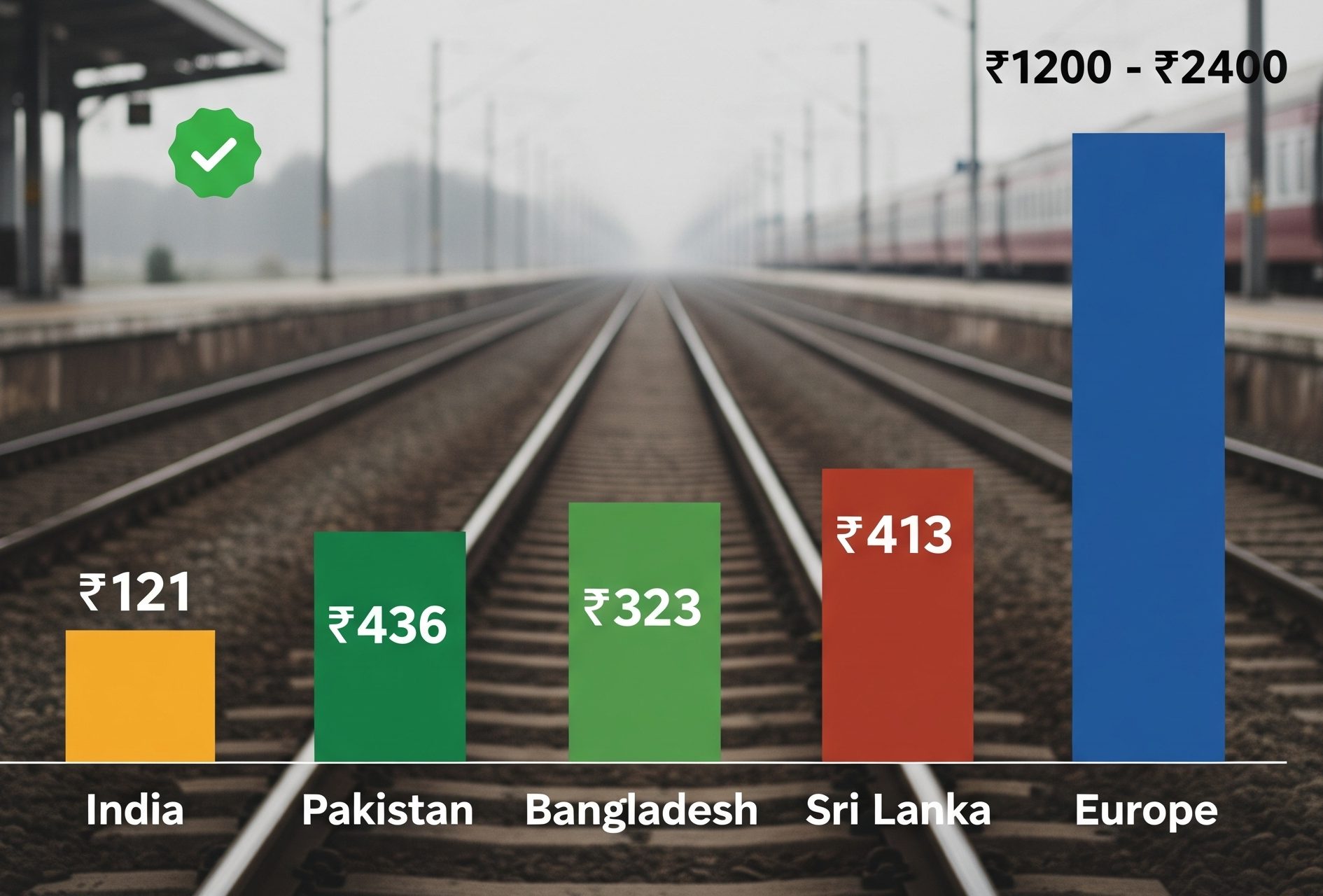
Image generated from Google Gemini
- Indian fares are among the lowest globally.
- European train travel for the same distance can cost 10–20 times more.
This shows that Indian Railways keeps travel affordable for everyone, but it has to bear a big cost to do so.
Cost Structure & Expenditure
Running Indian Railways is expensive, and most of its earning goes into its day to day operations. It has thin margins but high spendings. The operating ratio stays around 98-99% meaning the Railways spend ₹98–99 to earn ₹100. In some years, it even crosses 100%. So while Railways aren’t in loss, they make very little surplus.
Where the Money Goes
- 69% on salaries of 11+ lakh employees
- 23% on pensions
- Fuel, electricity & repairs also take a big chunk
- Loan repayments to IRFC are rising fast – expected to take up ₹49,000 crore by FY2
Diesel vs Electric Train
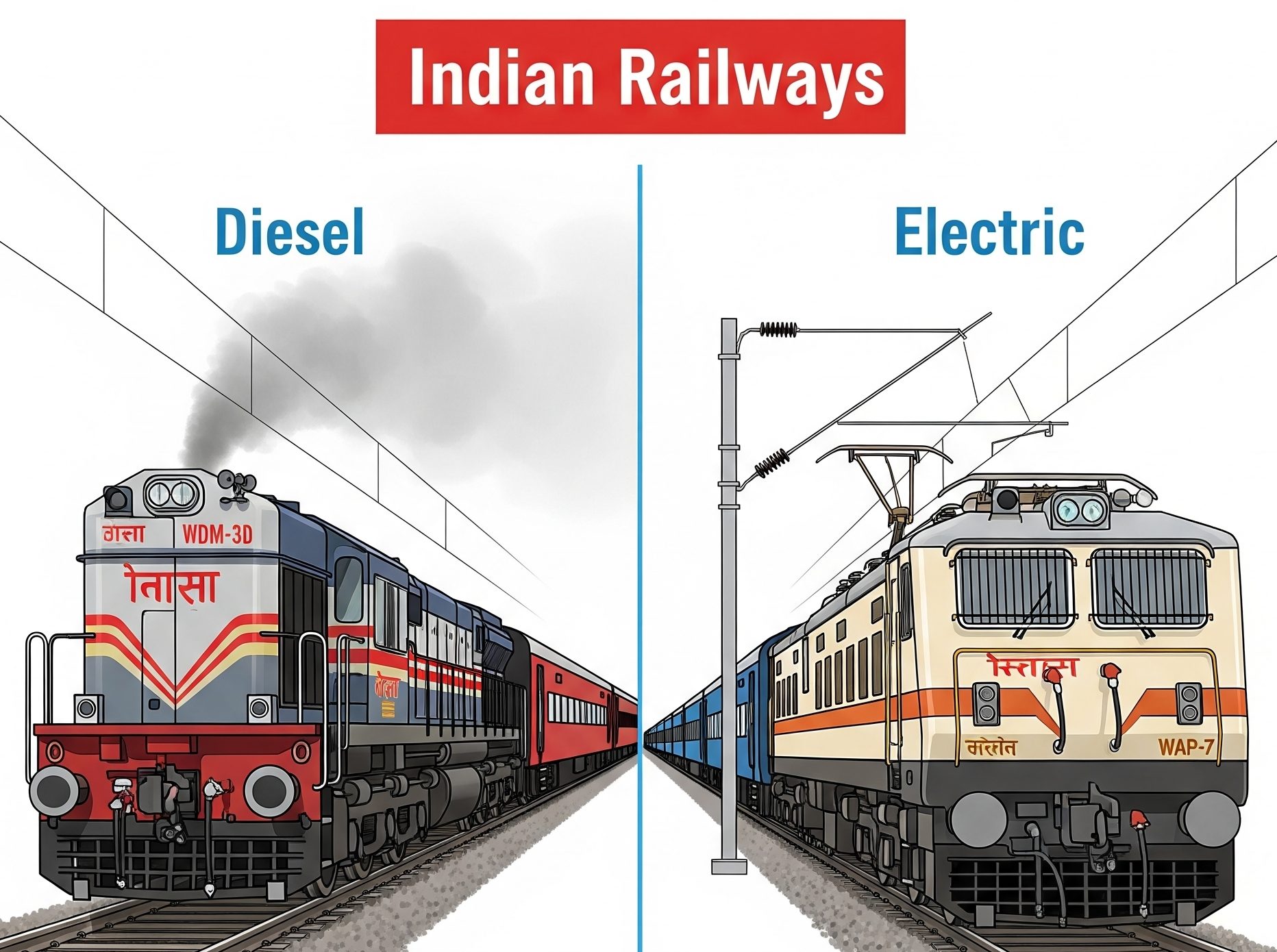
Image Generated from Google Gemini
Thanks to electrification (now covering 97% of routes), fuel costs are reducing. Indian Railways saved ₹4,700+ crore in FY24 due to less diesel use.
Rising Debt
Railways borrow heavily through IRFC. By FY26, IRFC’s total borrowings may touch ₹4.4 lakh crore, adding pressure through high interest and lease payments.
Safety Funds Falling Short
Funds meant for track repair and safety (like DRF and RRSK) are regularly underfunded. In FY24, only ₹800 crore went to DRF vs a target of ₹1,000 crore.
Capex Still Dependent on Govt.
Most big projects (trains, stations, tracks) are paid for by the central government. In FY25, about 95% of ₹2.65 lakh crore capital spend came from government support. Railways’ own contribution was just 1–4%.
Interest payments alone are 18–19% of working expenses, add to that pension obligations, and there's little room for self-funded growth.
Railway’s Profit Strategies
Indian Railways is using smart reforms to earn more and spend better:
Boosting Freight Earnings
- Building Gati Shakti Terminals, allowing private wagons and giving rebates to attract more goods.
- It’s aiming to carry 1,700 million tonnes (MT) of goods in FY26 and 3,000 MT by 2030, But current growth is only ~4%, while 9% is needed.
Premium Passenger Travel
- More people now prefer AC coaches and premium trains like Vande Bharat.
- AC Chair Car and Executive Class bookings may grow 33–56% in FY26.
Non-Fare Income Rising
- Earning from ads, kiosks, food stalls, station rentals, etc., under NINFRIS policy.
- Non-fare income grew 19.8% in FY25 and may touch ₹20,600 crore in FY26.
Cutting Costs
- Less hiring, more use of digital tools (for bookings, freight, etc.).
- Electrification saved ₹4,700 crore on diesel in FY24.
Balancing Social Value and Financial Value
Indian Railways walks a tightrope between fulfilling its social mandate and ensuring financial viability.
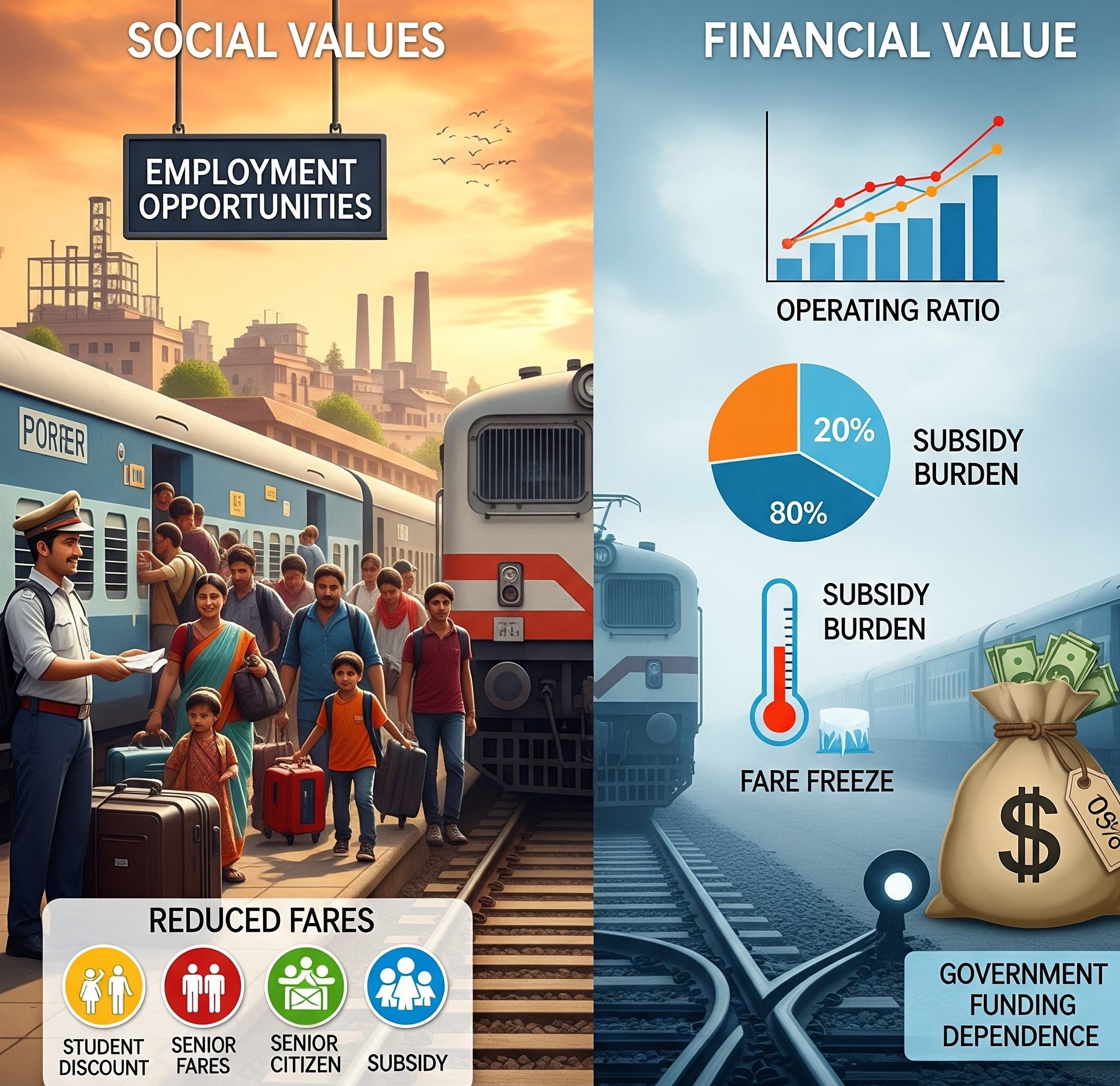
Image generated from Google Gemini
Social Value
- Employs over 1.25 million people, one of the largest employers globally.
- Provide affordable transport to millions and connectivity all over India.
- Offers subsidies up to 45–47% on passenger fares.
- Extends fare concessions to students, Divyangjans, patients, and others.
Financial Value
- Operating Ratio near 98.9% in FY 2024–25 i.e. very little margin.
- Bears an annual subsidy burden of ₹60,000 crore.
- Fare freeze (2020–2025) limits revenue growth.
- Remains heavily dependent on government funding for expansion and upgrades.
So we can say that it functions more as a public welfare service than a profit making entity.
Challenges Faced by Indian Railways
Indian Railways keeps India moving, but behind the scenes, it’s battling aging tracks, safety risks, tight finances, and faster rivals. Fixing these cracks is key to turning it into a world-class transport giant.
Infrastructure
- Aging infrastructure: Old tracks, coaches, and signaling systems reduce efficiency and safety.
- Overloaded routes: Many lines run over capacity, causing frequent delays.
- Manual signaling: Outdated systems lead to operational inefficiencies.
Safety
- Frequent accidents: Derailments and collisions remain a concern.
- Unmanned crossings: Still pose risks despite ongoing elimination.
- Maintenance gaps: Managing 67,000+ km of track is a huge challenge.
Financial Strain
- High operating ratio (98.9%): Minimal surplus for reinvestment.
- Heavy subsidies (₹60,000+ crore/year): Railways rely on government support.
- Losing freight share: Road transport is faster and more efficient.
Operational issues
- Capacity limitations: Can’t meet growing demand in key corridors.
- Delays: It’s very common and it hurts passenger’s confidence.
- Rising competition: Airlines and roadways offer faster and more convenient travel.
Also Check - Apollo Green Energy : IPO Likelihood & Timeline
Is Indian Railways Truly Profitable?
Technically yes, but practically it's very limited. In FY24, Indian Railways reported a ₹2,393 crore surplus on ₹2.65 lakh crore revenue, but with a 98.9% operating ratio, almost all earnings are spent on operations. Even capital investments and safety upgrades still depend largely on government funding, with little room for self-sustained growth.
Additionally, it carries a massive social burden offering subsidized fares to millions, providing concessions to vulnerable groups, and ensuring connectivity across the country, including loss-making rural routes. Most of its revenue comes from freight, while passenger services remain loss-making, recovering just around 53% of their cost.
Indian Railways may not be highly profitable in strict financial terms, but its true worth far exceeds what balance sheets can show. It runs not just on revenue but on purpose.


